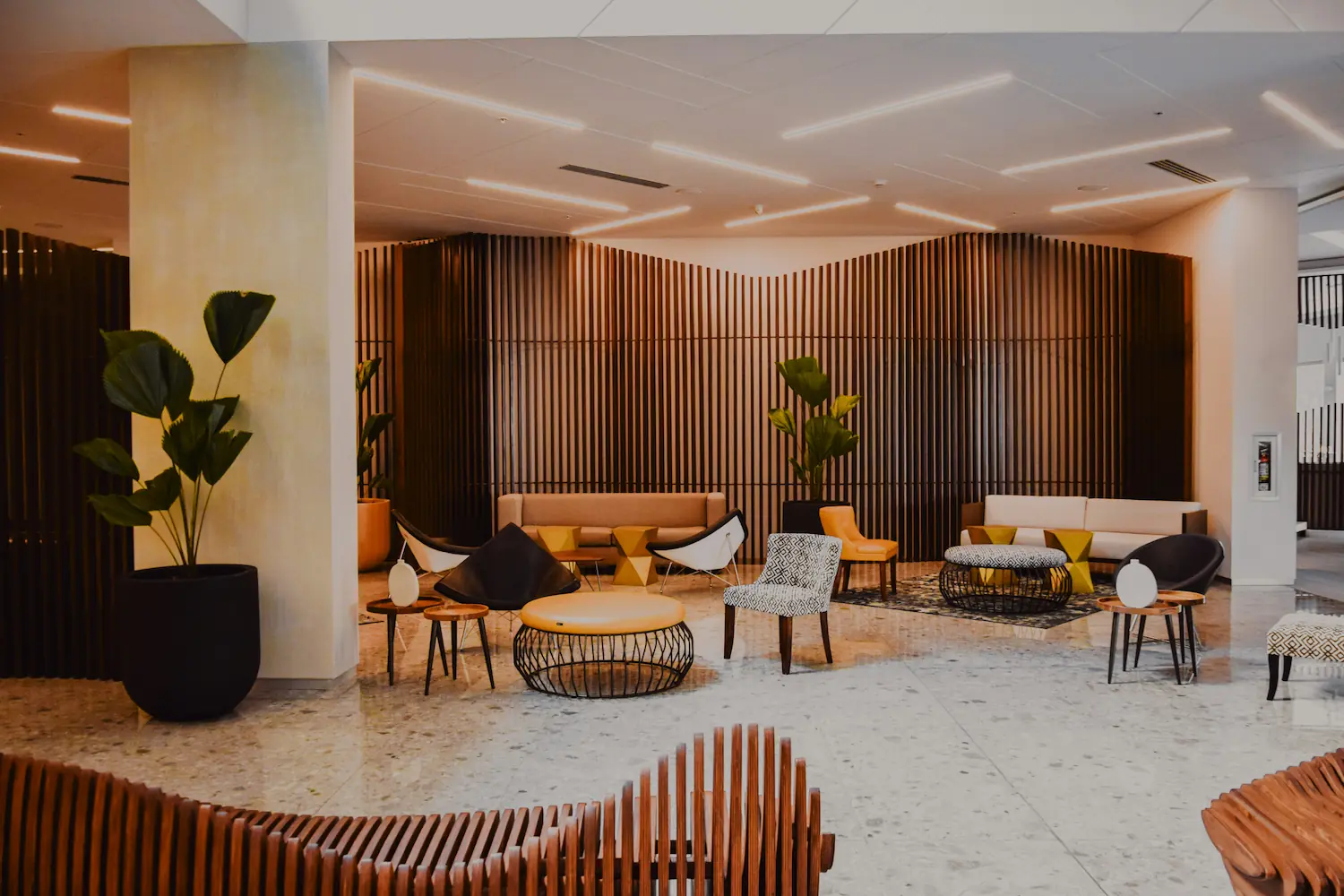Data Driving the PMS Solutions of the Future
Data plays an increasingly important role in the hospitality industry. In 2025, smart solutions are needed to effectively manage information and optimise operations.
Switching to a cloud-based PMS is not just a technological upgrade - it's a necessary evolution. Here are six data-driven reasons why cloud-based PMS solutions are transforming the hotel and hospitality industry.
1. how to move to cloud-based PMS
- Analyse your current needs.
- Compare providers based on features and support.
- Plan data migration and train staff.
Switching from an on-premise to a cloud-based Property Management System (PMS) requires careful planning. Cloud-based systems offer increased efficiency, cost savings and real-time access.
Step 1: Evaluate needs
Understanding where your current system falls short is crucial. It will help you define what features you need in a new cloud-based PMS.
- Identify the limitations of the system: List data access, scalability and user experience issues.
- List the necessary functions: Create a checklist of key features such as analytics tools, mobile access and compliance support.
Step 2: Compare suppliers
Choosing the right provider is a crucial factor for a successful transition.
- Research potential suppliers: Compare features and reviews in the industry.
- Evaluate customer support and training opportunities: Good support reduces stress and facilitates implementation.
Step 3: Plan migration strategy
Careful planning of the migration is crucial to minimise disruption.
- Create a realistic timetable: Set aside time for data inventory, system configuration and testing.
- Plan for data security and backup: Back up all data before making changes.
Test before full implementation
Before launching the system, it should be tested. Have a small group of users test the system to identify problems.
Step 4: Implement training and integration
A successful transition depends on the preparation of staff and how well the system is integrated.
- Organising training courses: Plan comprehensive training programmes for different user groups.
- Integrate existing systems: Ensure that the new system is compatible with workflows and databases.
Continuity in the transition
Ensure a smooth transition from the old system to the new cloud-based PMS.
Before we dive into cloud-based PMS solutions
If you are just starting to explore PMS systems, our guide on PMS systems give you the basic understanding you need.
Benefits of cloud-based PMS
- Increase efficiency through smoother workflows.
- Reduce costs by eliminating the need for physical hardware.
- Always available with real-time updates.
Improved efficiency
Cloud-based PMS systems simplify many tasks.
- You no longer have to rely on paperwork.
- Data is available in real time and from any location.
- Bookings and customer information are managed seamlessly from different locations.
Cloud-based PMS systems automate routine tasks such as booking management and invoicing, reducing manual labour and errors.
- Requires physical servers and local IT infrastructure.
- High initial investment costs for hardware and installation.
- Restricted access - can only be used on site.
- Updates and maintenance must be handled manually by IT staff.
- Security risks as older systems often lack modern safeguards.
- Often difficult to integrate with other systems, creating inefficient workflows.
- Data is at risk of being lost in case of server failure without a proper backup solution.
- Scaling up is costly and requires additional hardware investments.
- Limited backup and recovery options, increasing the risk of data loss in the event of a system crash.
- Slower pace of innovation - more difficult to implement new features and updates compared to cloud-based systems.
- Accessible from any device with an internet connection.
- Lower initial costs - usually subscription-based solutions.
- Automatic updates and security upgrades without downtime.
- High security with encryption, GDPR compliance and real-time backups.
- Easy to integrate with other systems such as CRM, booking engines and payment solutions.
- Scalable - hotels can easily add more rooms, locations or features if needed.
- Real-time data and analytics for better business decisions and optimised revenue management.
- Reduced need for local IT staff and technical maintenance.
- Faster implementation and shorter learning curve for staff.
Cost-effectiveness
Cloud-based systems are often significantly more economical than traditional solutions. Because they don't require physical servers or other expensive hardware, businesses can save on both start-up costs and ongoing maintenance.
For many businesses, cutting investment in IT infrastructure can significantly reduce costs. In addition, many cloud-based PMS systems offer flexible subscription models, making them accessible to businesses of all sizes.
For example, costly licence fees and potential repairs to physical systems are eliminated, freeing up capital for other business areas. Small hotels can particularly benefit from cloud-based solutions by reducing their IT costs while improving their service.
Ease of use and integration
Cloud-based PMS solutions are known for their ease of use and strong integration capabilities. Because these systems are designed for the cloud, they are intuitive and require less time to train staff. This means that even new employees can quickly learn the system, increasing productivity.
Another key benefit is the ability to integrate external tools. Many systems have in-built links to payment solutions, CRM systems and other important tools. This saves time and ensures that data is consistent and reliable across platforms. Thanks to this real-time data collection, businesses can make more informed decisions.
To read more about advanced integration possibilities, see our article on essential features of PMS.
Mastering data analysis in cloud-based PMS
- Real-time tools speed up decision-making.
- Predictive tools improve future planning.
- Local systems limit data access.
Use in-built analysis tools
Cloud-based PMS (Property Management System) often offer a range of advanced analytical tools compared to traditional on-premise systems. These tools enable real-time access to data, which is crucial for quick decisions. Being able to see data in real time has proven invaluable to organisations, as it provides immediate insights into operations. Unlike on-premise systems that require manual updates, data is automatically updated in the cloud, allowing for up-to-date reports at any time.
Data-driven forecasting to stay ahead
Predictive analytical tools are one of the main advantages of modern PMS and RMS. These tools help to predict trends by analysing historical data. By examining occupancy trends and other critical parameters, it is easier to predict future conditions and plan better. Predictions in data often guide pricing strategy, maintenance schedules and workforce planning, which are crucial to optimising operations.
These predictive capabilities are often lacking in on-premise PMS systems, limiting opportunities for growth and strategic planning. Cloud-based systems streamline these processes and lead to more agile and efficient operations.
Improving decision-making with predictive tools
In addition to predicting trends, predictive analytics in cloud-based PMS also contribute to better decision-making. By utilising both historical and real-time data, decision-makers can make informed decisions with greater confidence. These tools transform raw data into actionable insights, enabling smarter location of resources, targeted marketing and optimised usage.
Real-time insights can also improve the guest experience, as managers can identify patterns and trends in customer behaviour. By using predictive data to anticipate customer preferences, businesses can customise their services, thereby increasing customer satisfaction and loyalty.
Differences between on-premises and cloud-based PMS
The differences between on-premises and cloud-based PMS systems are significant. On-premises systems are limited by their hardware and update capabilities. They require additional investments for upgrades and expansions. Cloud-based systems, on the other hand, offer scalability and regular updates without the need for large physical investments. This flexibility is crucial as market demands change.
Cloud systems also remove geographical restrictions by enabling remote access to data. This provides a major advantage in terms of operational flexibility and employee productivity.
Resources and further reading
For those who want to learn more about what to consider, there are our guide to comparing PMS systems which provide further insights.
Networking with other professionals using cloud-based PMS and attending relevant webinars can also provide new perspectives and improve practical knowledge.
Maximise security with cloud-based PMS
- Cloud-based PMS systems improve security through encryption and regular updates.
- Proper configuration can prevent most common security breaches.
- Focus on real-time protection and consistent policy compliance.
Methods to protect data
Encryption and firewall protection are fundamental components of a secure cloud-based PMS. Encryption converts data into a secure format that can only be read with the correct decryption key. This protects against unauthorised access by people with malicious intent. Firewalls act as barriers that block unwanted traffic from entering the system and scrutinise traffic according to predefined security rules. To achieve optimal security, it is important to understand how these technologies work.
Compliance with local data protection rules is crucial. Rules such as the GDPR in Europe or the CCPA in California set high standards for handling and protecting data. Non-compliance can lead to heavy fines and damage your company's reputation. Therefore, a thorough review of data management practices within the cloud-based PMS system is necessary. Organisations must ensure that their systems are configured to meet these legal requirements.
Regular security updates
Security updates are essential to maintain the security of a cloud-based PMS. They protect against new threats and vulnerabilities that constantly emerge. It is important to establish schedules for regular updates to avoid security gaps. Automated systems can streamline this process and ensure that updates are implemented on time without manual intervention.
Implementing cybersecurity protocols is necessary. It's not just about installing software, but also implementing measures such as multi-factor authentication (MFA). Many organisations do not implement MFA for administrators, leaving systems vulnerable to attack. Cybersecurity also includes training staff on phishing and other social engineering techniques. The decision to implement or ignore these security measures can have a decisive impact on a company's resilience to cyber threats.
Risks of misconfiguration
Misconfiguration is one of the main security risks. This problem allows unauthorised persons to gain access to the system due to incorrect settings or inadequate security policies. Cloud-based PMS systems require careful configuration of all aspects of the system. Ensuring that authorisations are strict and data is segmented as needed are fundamental measures.
Regular audits of the cloud configuration can identify and fix these errors. Successful risk management relies on a combination of automated tools and manual security audits.
Discussions on preventing misconfigurations often revolve around the balance between ease of use and security. While ease of access can improve productivity, it can also open up to manipulation if not managed correctly.
Access control and identity management
Access control and identity management are critical aspects of security in cloud-based PMS systems. The principle of least privilege, where users only have access to what is absolutely necessary, reduces the risk of security breaches. Identity and Access Management (IAM) frameworks should be reviewed regularly to ensure they are effective.
Organisations should implement role-based access control (RBAC). This limits access to only those who need it, improving traceability and accountability - two key factors in a strong security strategy. It is recommended to conduct regular audits to evaluate the effectiveness of access controls.
Identity management automation is becoming increasingly important due to the scale and changing nature of cloud environments. As technology evolves, keeping up to date with the latest research and tools becomes crucial.
Advanced tips for optimising cloud-based PMS
- Automation improves efficiency.
- Regular training prevents problems.
- Streamline data management.
Utilise automation features
Automation is crucial in cloud-based Property Management Systems (PMS) to save time and improve accuracy. Start by identifying recurring tasks. Common examples include billing, scheduling and reporting.
- Automate invoicing: Set up the system to automatically generate invoices for rent or services. Make sure integration with accounting systems is seamless to avoid discrepancies. Automation reduces human error and streamlines the process.
- Notifications for guests and staff: Implement automatic notifications for overdue payments, contract renewals and maintenance updates. This keeps everyone informed without manual intervention and reduces the risk of errors.
Automation can feel overwhelming. Just because something can be automated does not mean it should be automated. Choose tasks carefully. Balance is key to ensure that automation complements human supervision.
Modular Visit's platform streamlines staff workflows through task automation. The system can automatically generate tasks based on specific events. For example:
- If a guest books an extra bed, the cleaning staff is immediately tasked with placing it in the room.
- Additional services and upselling: when a guest orders additional services such as flowers or champagne in the room, the relevant details are automatically assigned to the staff responsible for preparing for the guest's arrival.
- Recurring tasks can be created automatically. For example, smoke alarms should be checked monthly or the lawn should be mowed weekly.
Tasks can also be marked as urgent to signal priority to the recipient.
Avoiding common pitfalls
- Avoid common mistakes to ensure smooth operation and switch to cloud-based PMS.
- Ongoing training of users is essential.
- Effective management of data redundancy and inconsistency.
Avoiding common pitfalls
Avoiding common pitfalls in the implementation of a cloud-based PMS is necessary for smooth operation. Start by focusing on continuous user training.
Choosing the right Property Management System (PMS) is crucial for smooth operations, but many hotels encounter problems that can affect both efficiency and guest experience. One of the most common pitfalls is a lack of integrations. A PMS must be able to connect with other systems, such as CRM, accounting and booking platforms, to ensure a smooth workflow. Without these integrations, staff may have to manage tasks manually, increasing the risk of errors and inefficiencies.
Another important aspect is user-friendliness. If the system is complicated or difficult to navigate, it can lead to a longer learning curve for staff and an increased risk of mistakes. A PMS should have an intuitive interface and mobile access to facilitate the management of bookings and guest communication, even when staff are not on site. In addition, scalability is a crucial factor - the system should be able to grow with the business, whether it's managing more rooms, more properties, or new features that become necessary over time.
Hidden costs are another pitfall that many hotels discover only after they have already implemented a system. Some vendors entice with low upfront costs but then charge for integrations, support, and essential features like reporting and analytics. Having transparent pricing and understanding the long-term costs is crucial to avoid unpleasant surprises. Finally, system performance and support are critical factors - slow systems and lack of customer support can quickly lead to frustration and disruption, affecting both staff and guests. Choosing a PMS that offers fast response and reliable performance is therefore an investment in both efficiency and guest satisfaction.
10 pitfalls to avoid when choosing PMS.
Ensure that the PMS integrates seamlessly with your existing systems (e.g. CRM, accounting, booking platforms).
Ensure that the PMS integrates seamlessly with your existing systems (e.g. CRM, accounting, booking platforms).
Ensure that the PMS integrates seamlessly with your existing systems (e.g. CRM, accounting, booking platforms).
Ensure that the PMS integrates seamlessly with your existing systems (e.g. CRM, accounting, booking platforms).
Ensure that the PMS integrates seamlessly with your existing systems (e.g. CRM, accounting, booking platforms).
Ensure that the PMS integrates seamlessly with your existing systems (e.g. CRM, accounting, booking platforms).
Ensure that the PMS integrates seamlessly with your existing systems (e.g. CRM, accounting, booking platforms).
Ensure that the PMS integrates seamlessly with your existing systems (e.g. CRM, accounting, booking platforms).
Ensure that the PMS integrates seamlessly with your existing systems (e.g. CRM, accounting, booking platforms).
Delays and crashes can negatively impact both the guest experience and daily operations.
Integration challenges
Seamless integration ensures that all systems work together seamlessly. Follow these steps to address potential issues:
Review compatibility with existing software
- List all software: Create a complete list of existing systems. Identify all software that interacts with the PMS.
- Review supplier documentation: Read guides and manuals. The documentation often contains information on compatibility.
- Carry out compatibility tests: Test integrations in a controlled environment. Check that all functions are working properly.
- Update software: Make sure that all existing systems are up to date. Updates often fix integration problems.
- Consult with suppliers: Suppliers can provide insights into potential problems and solutions.
- Use compatibility tools: Tools are available to test software compatibility and identify conflicts.
Guests today have higher expectations. Let us show you how we can take your business to the next level.
Conclusion
Cloud-based PMS solutions are fundamentally changing the hotel industry. The benefits are clear: higher efficiency, lower costs and better security. But the biggest win isn't just about numbers - it's about how smoothly your business can run.
No more late nights with server problems or panic over lost data. With a cloud-based system, you get a solution that is both secure and flexible. It grows with your business, protects your information and helps you make better decisions.
Changing systems can feel like a big step, but most hoteliers have been where you are now. They had the same concerns, but they took the plunge, trained their team and saw clear improvements in their business.
Now you have the knowledge to do the same. If you feel more confident, start small - perhaps with one department or a single function. Test the analytical tools, try the automation and see how it affects your team.
The industry is moving rapidly towards digitalisation. Those who adapt get a head start, while others risk being left behind. You know the opportunities - now it's up to you to take the next step.







